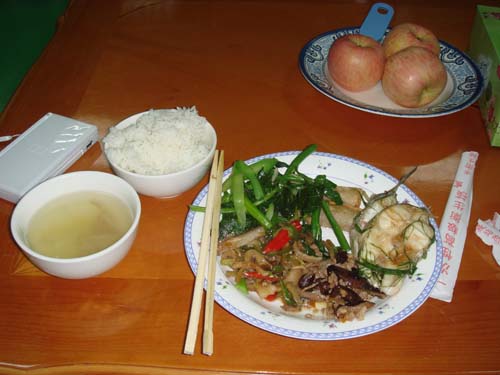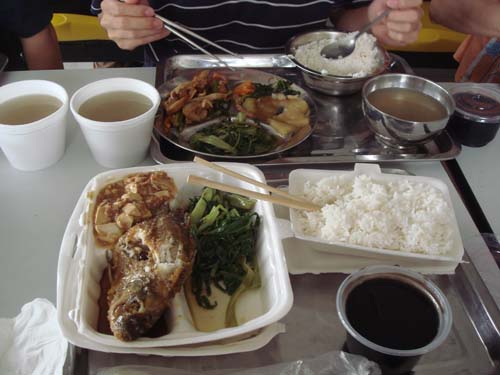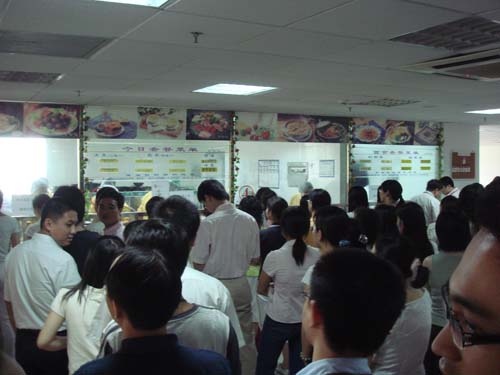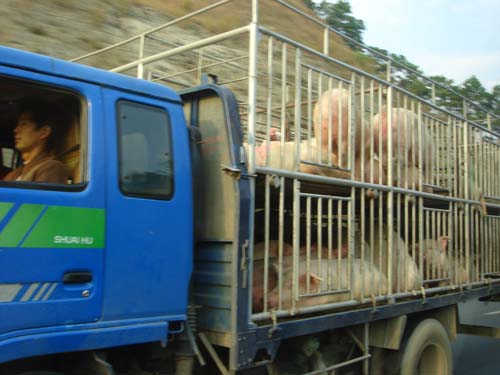I’d thought I’d write a brief (okay, it ended up much longer than I thought it would…) blog entry about some of my most recent experiences in China.
I’m currently out in Shenzhen working on bringing up the Chumby production line. This means everything from raw material approvals to programming, testing, QA, and certification for not only the Chumby hardware itself but also its accessory line. It’s a lot of work.
I’m very lucky to be working with a fabulous company out here which serves as my liason between vendors and contractors. I’ve been told explicitly by Chumby that I can’t mention the name of this company because it is a “strategic” advantage for Chumby at this point, but I also made it clear that eventually I will talk about this company publicly, after the Chumby hardware is launched and the magnitude of the strategic gain from radio silence is reduced. I’ve got some nice photos of Chumbys in various states on several production lines that I’d also like to share as well someday.
Shenzhen is quite an up and coming city. I’m staying in a serviced apartment on Xinwen road called the Frasier Futian. It’s cheaper than a hotel yet it has similar amenities (such as maid and laundry service and complementary breakfast), although the quality control of the details of the facilities isn’t quite the same as at a name-brand hotel. I’d recommend this as a place for anyone who needs an extended stay in Shenzhen. The location is good–several very nice restaurants in walking distance, a Starbucks and some convenience shops–and it’s about a 5-10 minute walk to the MTR (the subway system in Shenzhen–you can go all the way to Hong Kong on the subway from here). Most importantly, the internet works great here; I have no trouble using Skype and even video conferencing works well.
The most miserable two days of my life were also spent around here. I got food poisoning–I think it was from handling money (which is filthy dirty out here, it literally smells of human waste) and then eating my food, because I’ve been reasonably careful to avoid anything that’s uncooked here in Shenzhen. It was the worst food poisoning I’ve had in my life, it lasted five days until I finally broke down and went to a doctor in Hong Kong and got antibiotics for it (I’m told you never want to go to a doctor in Shenzhen if you can help it). The doctor gave me Ciproflaxin–which I have an allergy for–but the doctor was like, “do you get a rash around your mouth?” and I was like “no, only on my hands and feet”, and she was like, “well, take the Ciproflaxin then. It won’t kill you and you’ll need the strength of Cirpo to get rid of those bugs in your gut.” It worked; I got better. I did get that rash, but I also didn’t die. One really nice thing about the doctors offices in Hong Kong is that they also fill your prescription at the office, so I didn’t have to run around Hong Kong searching for a pharmacy. I was diagnosed and taking my first dose of antibiotics all within 15 minutes (and at a fairly reasonable price–about $125US for a weekend visitation, including the medications).
Anyways, while I had the food poisoning and before I could see the doctor, I had to go to a factory in Donguang at 8AM and I was up until the next morning at 3 AM debugging the manufacturing problems in the very first run of the Chumby circuit boards coming off the line. The fever, cramps, dehydration and constant trips to the toilet didn’t help progress. I spent the night in the factory dorms (where the workers also stay), which isn’t too bad of a place (actually a bit nicer than many of the dorms at MIT) but I ran out of toilet paper around 5 AM (I was making trips to the bathroom every hour) and I had to ehm–improvise. There is no concierge service in a factory dorm! The next morning I had to get up at 8 AM again and continue debugging. Fortunately, most of the significant problems were resolved and the root cause of all the remaining issues are at least understood and solvable in time for production (or so I hope!). There are more interesting stories around the root cause of some of these issues, but let’s save them for another day.
In the end, all I can say is what doesn’t kill you makes you stronger…and I also carry around a bottle of hand disinfectant now for after when I handle money. Surprisingly, it was about the hardest thing to find in the drugstores out here. It was buried in with the urgent care first aid area, oddly enough, next to the alcohol used for disinfecting wounds. I think the store clerks didn’t understand that this product is for preventative use, and not for urgent care use.
I also had a little adventure finding a fedex out here. Normally, fedexes aren’t hard to find, but there was a three-day vacation called the “5-1” (for May First). It’s a holidy declared by the communist party to celebrate the efforts of the laborers. Fedex was closed for three days and I urgently had to send a package. So, I hopped on a boat to Macau because I knew the casinos would be open on May 2nd and I couldn’t imagine a high-end casino not having a business center with a Fedex. And indeed, the Wynn Macau had a fedex with english speaking staff that happily processed my package on time!
Macau was also a very interesting place. There is a lot of hype about Macau being the next Las Vegas, with casinos bigger and more fantastic than Vegas. Macau casinos were certainly opulent and impressive, with a great many gimmicks and displays, but I think the hype is a little bit too much. I’ve been to Vegas many times, and currently, I think Vegas still trumps Macau. At least, the food in the Vegas casinos is better, and the clientele is more fun. Let me tell you, gamblers in Macau are hard core. In Vegas, you see people at least smiling and having fun at most tables. In Macau, even the simplest of dice games had chain-smoking men staring intently at the table. Nobody drinks alcohol–they all have coffee or tea, to keep their minds sharp. You can feel the intensity–the casinos are eeriely quiet compared to the din of the Vegas casino. I’m not that into gambling, so I guess it wasn’t for me.
I thought the local food in Macau was quite good. The Portuguese egg tart is tasty–it’s a variant of the Chinese dim sum called “dan gau” (simply put, an egg tart). While the Chinese version tastes quite eggy, the Portuguese version uses a type of flan for the interior, so it’s mildly sweet and has a nice texture to it. I also ate some local Portguese food, which was very nice. It’s very similar to a Japanese curry, I thought, although with less curry and a slightly more watery sauce. You can really taste the flavor of the meat through the sauce–I had the oxtail and chicken. I have no idea what it’s called, I just asked the waiter what was popular. Incidentally, I wasn’t as impressed with the high-end casino food.
Speaking of food, I also went to the most fantastic noodle shop in Hong Kong today (I had to run down there to shop for fabric samples for the Chumby–they have a great textiles market in Sham Sui Po). It’s the Crystal Jade–apparently a chain restaurant–I went to the one in the Harbour City Ocean Center. They have hand-pulled noodles there and oh man they were so good. The Harbor City Ocean Center is near the Tim Sha Tsui MTR stop, just stop into any hotel near the MTR station and ask the concierge for directions.
This post has grown much longer than I thought it would be, so I’ll stop the story telling now and leave you with these two pictures of street signs that I thought were just…interesting.
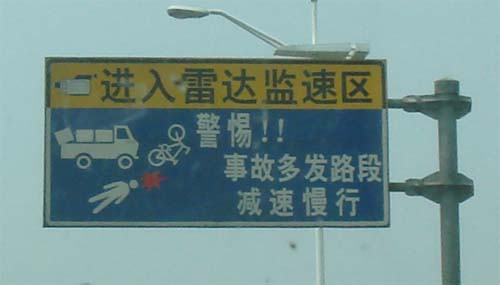

Obviously, the no bikes sign isn’t obeyed. Makes you wonder about the other ones.
